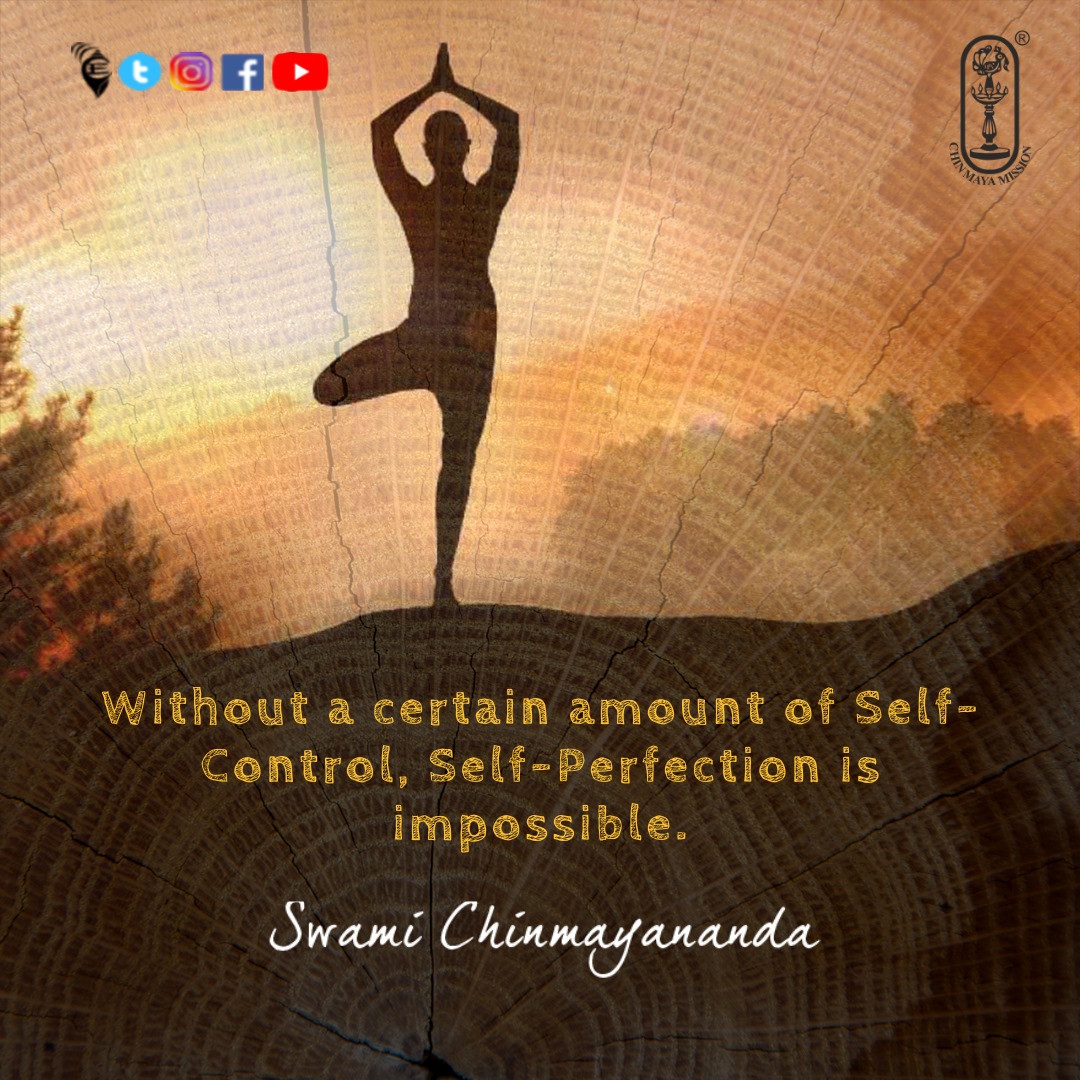The Essence of the Aitareya and Taittiriya Upanishads 6.1. - Swami Krishnananda.
----------------------------------------------------------------------------------
Thursday, July 01, 2021. 8:06. PM.
Chapter 6: Some Light on Yoga Practice.-1.
-----------------------------------------------------------------------------------
Why are we so far away from the Absolute, is also a question. The Supreme Being, or Absolute, is transcendent to our level. This transcendence, which we call Brahman or the Absolute, is manifest through space and time by way of externalisation; and in the process of externalisation, the selfhood of experience is gradually lost. The greater the externalisation, diversification, expression, manifestation outwardly towards objects in space and time, the greater is the loss of selfhood. The more we are conscious of an external object, the greater is the loss of self-consciousness. As we noted earlier, in all attachments to objects of sense there is a transference of self to the object, so that we lose ourselves first in order that we may love the object. So self-loss takes place on account of a complete transference of character of selfhood to the object outside. The more we move outwardly, the less is the selfhood of experience; and the greater is the loss of the selfhood, the greater also is the loss in the quality of happiness. So it is the Self that is the source of bliss, not any object or any kind of external movement towards an object. But the more we gravitate towards externality, the more is the extent or the measure of the loss of selfhood in us. Thus, we have descended too far.
2.
According to Vedanta terminology, there is a gradual descent from Brahman to Isvara, from Isvara to Hiranyagarbha, from Hiranyagarbha to Virat, and from Virat there is a further triplication taking place. On one side is the objective world, on the other side the individuals, and in the centre we have got the controlling divinities called Devatas, so that we, the subjects, look upon the object outside through space and time as if it is bifurcated from us, with no connection at all between one and the other.
3.
Not only that, something worse has taken place. From the causal condition we have come to the intellectual, from the intellectual to the mental, from the mental to the vital, and from the vital we have come to the physical level. These are the five koshas mentioned earlier. We can imagine how far we have descended. So there is no wonder that we are unhappy, and that the so-called happiness of sense contact is not divine happiness—though, by means of psychological analysis, we are able to conclude that even that little fraction of so-called happiness of sense contact is due to the presence of the Absolute, by way of reflection and distortion. This is the reason why we are unhappy. This is also the nature of happiness, and this also gives a clue as to how we can reach the Absolute. This method is called yoga.
4.
The practice of yoga is the art of contacting the Absolute. There is no such thing as contacting the Absolute in a literal sense. We know we contact an object, but the Absolute is not an object at all. It is the Self, it is the internal being of everything. How can we contact it? How can we contact our own consciousness? But this is what is meant by yoga. Yoga means union—union of the individual with the Absolute. But what is this union? How can we unite ourself with our own inner being? This is the difficulty. We cannot even imagine what it is. But this union is a metaphorical one; it is not a physical contact. It is metaphorical in the sense that in yoga there is the union of our consciousness in the present context with the supreme essence that we are. In this practice of yoga, we gradually lessen the degree and the intensity of externality of consciousness and move inward gradually. It is self-control, ultimately, which is called yoga—self-restraint which includes the restraint of the operation of the sense organs, the restraint of the mind, the restraint of the intellect, and the restraint of the impulse to externalise consciousness in any manner whatsoever. The urge of the consciousness to manifest itself in an external form is contrary to yoga.
--------------------------------------------------------------------------------------------------------------------------
To be continued ....
===========================================================================================




.jpg)

Comments
Post a Comment